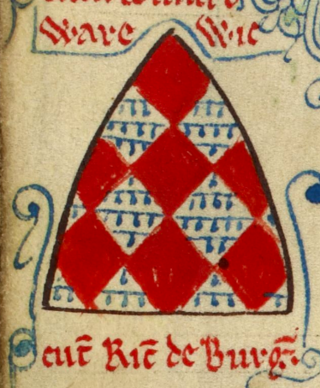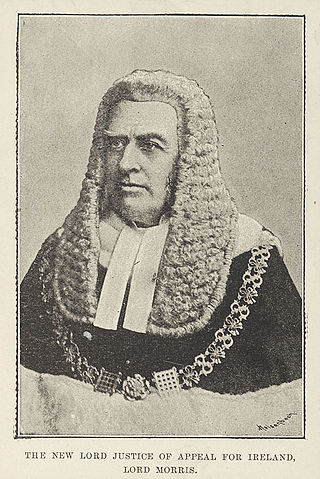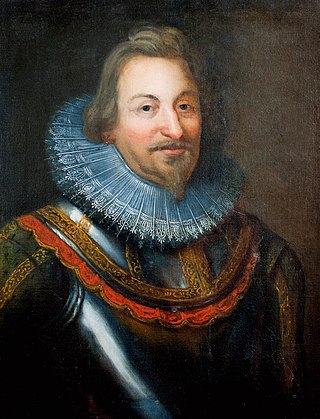Related Research Articles

William Marshal, 1st Earl of Pembroke, also called William the Marshal, was an Anglo-Norman soldier and statesman during High Medieval England who served five English kings: Henry II and his son and co-ruler Young Henry, Richard I, John, and finally Henry III.
John de Gray or de Grey was an English prelate who served as Bishop of Norwich, and was elected but unconfirmed Archbishop of Canterbury. He was employed in the service of Prince John even before John became king, for which he was rewarded with a number of ecclesiastical offices, culminating in his pro forma election to Norwich in 1200. De Gray continued in royal service after his elevation to the episcopate, lending the King money and undertaking diplomatic missions on his behalf. In 1205 King John attempted to further reward de Gray with a translation to the archbishopric of Canterbury, but a disputed election process led to de Gray's selection being quashed by Pope Innocent III in 1206.

William de Braose, 3rd Lord of Bramber was a 12th-century Marcher lord who secured a foundation for the dominant position later held by the Braose family in the Welsh Marches. In addition to the family's English holdings in Sussex and Devon, William had inherited Radnor and Builth, in Wales, from his father Philip. By his marriage he increased the Braose Welsh holdings to include Brecon and Abergavenny.

William de Braose,, 4th Lord of Bramber, court favourite of King John of England, at the peak of his power, was also Lord of Gower, Abergavenny, Brecknock, Builth, Radnor, Kington, Limerick, Glamorgan, Skenfrith, Briouze in Normandy, Grosmont and White Castle.

Thomond, also known as the Kingdom of Limerick, was a kingdom of Gaelic Ireland, associated geographically with present-day County Clare and County Limerick, as well as parts of County Tipperary around Nenagh and its hinterland. The kingdom represented the core homeland of the Dál gCais people, although there were other Gaels in the area such as the Éile and Eóganachta, and even the Norse of Limerick. It existed from the collapse of the Kingdom of Munster in the 12th century as competition between the Ó Briain and the Mac Cárthaigh led to the schism between Thomond and Desmond. It continued to exist outside of the Anglo-Norman-controlled Lordship of Ireland until the 16th century.

The House of Burgh or Burke was an ancient Anglo-Norman and later Hiberno-Norman aristocratic dynasty which played a prominent role in the Norman invasion of Ireland, held the earldoms of Kent, Ulster, Clanricarde, and Mayo at various times, and provided queens consort of Scotland and Thomond and Kings of England via a matrilineal line.

Richard Mór de Burgh, 1st Lord of Connacht, was an Anglo-Norman aristocrat who was Seneschal of Munster and Justiciar of Ireland (1228–32).

The Attorney-General for Ireland was an Irish and then, from 1801 under the Acts of Union 1800, United Kingdom government office-holder. He was senior in rank to the Solicitor-General for Ireland: both advised the Crown on Irish legal matters. With the establishment of the Irish Free State in 1922, the duties of the Attorney-General and Solicitor-General for Ireland were taken over by the Attorney General of Ireland. The office of Solicitor-General for Ireland was abolished at the same time for reasons of economy. This led to repeated complaints from the first Attorney General of Ireland, Hugh Kennedy, about the "immense volume of work" which he was now forced to deal with single-handedly.
John Hastings, 1st Baron Hastings, was an English landowner, soldier and administrator who was one of the Competitors for the Crown of Scotland in 1290 and signed and sealed the Barons' Letter of 1301. He was Lord of the Manor of Hunningham.

Murrough O'Brien, 1st Baron of Inchiquin, 1st Earl of Thomond was an Irish peer, Chief of Clan O'Brien, and the last King of Thomond.
Juhel de Totnes, Latinised to Judhellus filius Aluredi, "Juhel son of Alured") was a soldier and supporter of William the Conqueror (1066–1087). He was the first feudal baron of Totnes and feudal baron of Barnstaple, both in Devon.
Giles de Braose was Bishop of Hereford from 1200 to 1215.
The post of Lord President of Munster was the most important office in the English government of the Irish province of Munster from its introduction in the Elizabethan era for a century, to 1672, a period including the Desmond Rebellions in Munster, the Nine Years' War, and the Irish Rebellion of 1641. The Lord President was subject to the Lord Deputy of Ireland, but had full authority within the province, extending to civil, criminal, and church legal matters, the imposition of martial law, official appointments, and command of military forces. Some appointments to military governor of Munster were not accompanied by the status of President. The width of his powers led to frequent clashes with the longer established courts, and in 1622 the President, Donogh O'Brien, 4th Earl of Thomond, was warned sharply not to "intermeddle" with cases which were properly the business of those courts. He was assisted by a Council whose members included the Chief Justice of Munster, another justice and the Attorney General for the Province. By 1620 his council was permanently based in Limerick.

Donogh O'Brien, 4th Earl of Thomond and Baron Ibrickan, PC (Ire), was a Protestant Irish nobleman and soldier, and Chief of Clan O'Brien. He fought for Queen Elizabeth during Tyrone's Rebellion and participated in the Siege of Kinsale. He obtained the transfer of County Clare, where most of his lands lay, from the Province of Connacht to that of Munster. He was made president of Munster in 1605.
Thomas de Clare, Lord of Thomond was an Anglo-Norman peer and soldier. He was the second son of Richard de Clare, 6th Earl of Gloucester and his wife Maud de Lacy, Countess of Gloucester. In 1272 he served a term as Lieutenant of the Duchy of Aquitaine. On 26 January 1276 he was granted the Lordship of Thomond by Edward I of England; he spent the next eight years attempting to conquer it from the O'Brien dynasty, kings of Thomond.
Sir Edward Fitton the Elder, was Lord President of Connaught and Thomond and Vice-Treasurer of Ireland.

The House of Braose was a prominent family of Anglo-Norman nobles originating in Briouze, near Argentan, Orne, Normandy. Members of this family played a significant part in the Norman conquest of England and subsequent power struggles in England, Wales and Ireland in the 11th to 14th centuries.
Meiler FitzHenry was a Cambro-Norman nobleman and Lord Chief Justice of Ireland during the Lordship of Ireland.
The Lordship of Meath was an extensive seigneurial liberty in medieval Ireland that was awarded to Hugh de Lacy by King Henry II of England by the service of fifty knights and with almost royal authority. The Lordship was roughly co-extensive with the medieval kingdom of Meath. At its greatest extent, it included all of the modern counties of Fingal, Meath, Westmeath as well as parts of counties Cavan, Kildare, Longford, Louth and Offaly. The Lordship or fiefdom was imbued with privileges enjoyed in no other Irish liberty, including the four royal pleas of arson, forestalling, rape, and treasure trove.
Stephen Devereux was a powerful Marcher Lord, and held Lyonshall Castle controlling an important approach to the border of Wales. As a key member of William Marshal, 1st Earl of Pembroke retinue, he played a significant role in the Earl's support of King John during the First Barons' War, and during the minority of Henry III.
References
- ↑ Fin. 4 Hen. III, p. 1, m. 2; online at Fine Roll, 4 Henry III no 263
- ↑ Claus. 11 Hen. III, p. 1; published in Calendar of Documents relating to Ireland, ed. H.S.Sweetman, London (1875) p.234
- ↑ The DNB gave Philip but was wrong here. See Fine Roll, 4 Henry III no 263
- ↑ Round, Dictionary of National Biography
![]() This article incorporates text from a publication now in the public domain : Round, John Horace (1886). "Braose, Philip de". In Stephen, Leslie (ed.). Dictionary of National Biography . Vol. 6. London: Smith, Elder & Co.
This article incorporates text from a publication now in the public domain : Round, John Horace (1886). "Braose, Philip de". In Stephen, Leslie (ed.). Dictionary of National Biography . Vol. 6. London: Smith, Elder & Co.